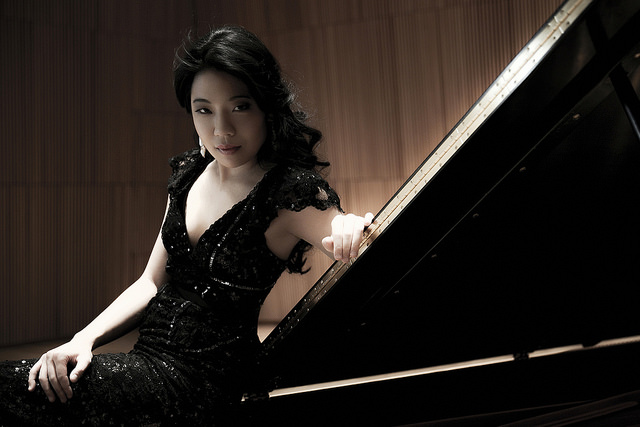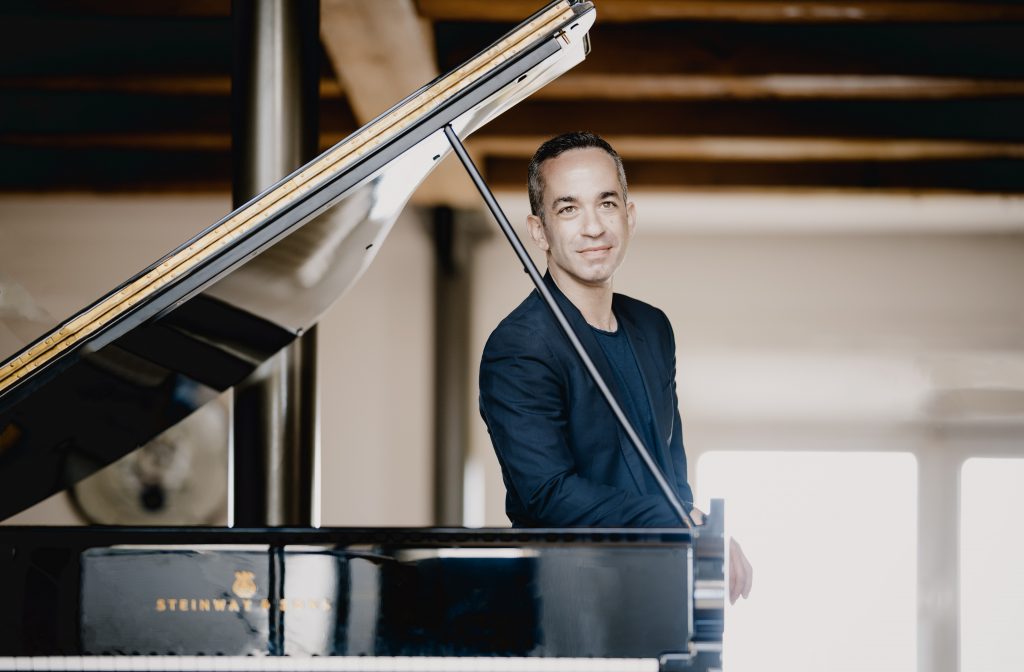La Jolla SummerFest 2022 Opens with a Grand Display of Virtuosity
La Jolla Music Society’s 2022 SummerFest opened Friday with a choice collection of unusual quartets. Of course we heard a typical string quartet play the rarely programmed Variations in A Major on a Russian Theme by a slew of 19th-century Russian composers, but we also heard Grażyna Bacewicz’s 1949 Quartet for Four Violins and Carl Czerny’s 1830 Quatour Concertant No. 1 for four pianos.
Of these three quartets, I found Bacewicz’s quartet the most engaging. Although the dissonant close harmonies of the quartet’s sinuous opening lines suggest a prelude to atonal meandering, the crafty Polish composer turns in the opposite direction with a series of inventive contrasting movements that remain within the parameters of tonality without falling into predictable progressions.I was taken with her sightly mournful first violin theme of the “Andante tranquillo,” gracefully intoned by Simone Porter and confidently taken over by Tessa Lark and Blake Pouliot. As this theme played out, Sophia Stoyanovich countered with the poignant pizzicato counter theme. The closing “Molto allegro” bristled with forays of excited pizzicato counterpoint marked by muscular rolled chords.
In 1899, Nikolai Rimsky-Korsakov persuaded half a dozen fellow St. Petersburg composers to join him in composing a set of variations—each in his own style—on a Russian folk song. I am surprised that this charming set of variations is rarely programmed, and it inaugurated this year’s SummerFest on a genial note. Rimsky-Korsakov harmonized the major-mode theme and provided the opening variation, a jovial excursion filled with exuberant declamations. First violin Blake Poulliot gave eloquent accounts of the theme and its iterations by Rimsky-Kosakov. Two of his prize students, Anatoly Lyadov and Alexander Glazunov, are well-known to music lovers, and they made winning contributions. But although few today will recognize the other four composers, all of the contributions proved highly persuasive.
Lyadov turned out a pair of variations, a predictably calm “Andante” that offers luxurious solos for the first violin and cello, executed with rich, glowing sonority by Blake Poulliot and Jay Campbell, and a perky “Con moto” propelled by fluent pizzicato motifs. Glazunov’s polished finale, marked alla polacca, i.e., written in the style of a brightly rhythmic polonaise, includes an exciting fugue placed before the rousing conclusion of this variation set.
Alexander Winkler’s “Allegro vivace” is propelled by rhapsodic rushes of the theme that allowed cellist Campbell to display the golden purr of his instrument; Campbell also gave eloquent depth to Nikolai Sokolov’s “Grave” variation. Jāzeps Vātols cast the theme in the minor mode in his variation, and Felix Blumenfeld also displayed his contrapuntal acumen in his “Allegretto scherzoso.”
Gathering four concert grand pianos on a single stage with four pianists capable of meeting the virtuosic demands of Czerny’s Quatour Concertante No. 1 is unquestionably a musical feat. But it is no musical feast. Think of it as a meandering 20-minute cadenza in which each player attempts to out-dazzle the previous display of right-hand pyrotechnics. From my perch in the balcony of the Baker-Baum Concert Hall, it appeared that Inon Barnatan and Joyce Yang delivered the majority of the jaw-dropping keyboard explosions, but pianists Garrick Ohlsson and Wynona Yinuo Wang executed their bravura roles with equal fervor. Occasionally I detected a familiar musical quotation, e.g. Paganini’s “La Campanella” theme, but the work lacked a discernible structure, which made listening to it akin to watching a slow freight pass by at a rail crossing.
With Bacewicz’s Quartet for Four Violins, Johannes Brahms’ Variations on a Theme by Haydn, Op. 56b, provided the musical substance of Friday’s SummerFest program. Ohlsson and Barnatan gave a commanding account of Brahms’ original two piano version of this stirring variation cycle the composer later orchestrated, a work that frequently and deservedly finds its way onto symphony programs. From the first variation, it was clear that Ohlsson’s patrician legato touch would deliver Brahms’ mellifluous, arched phrases with consummate ease. Barnatan provided engaging contrast with his more precisely defined attacks, which gave his sparkling figurations in the piano’s highest range delightfully pellucid definition.The two pianists gave this variation cycle the gamut of dynamic contrasts and subtle variation of texture that Brahms provided. If the two piano version of this variation cycle lacks the bright colors of the orchestral version, it does provide instead a more intimate, inviting entry into the composer’s complex musical imagination.
No one could accuse Chopin of complexity in his garish set of piano elaborations that flood Grand Duo Concertante on Themes from ‘Robert le diable’ for cello and piano. This unusual early work features a cello part written by the French cellist Auguste Franchomme, a contemporary of Chopin, and on Friday cellist Johannes Moser and pianist Joyce Yang met every musical challenge the score tossed their way.
But the fact that Chopin excluded this work from his carefully compiled official list of compositions tells us what he thought of this Grand Duo Concertante.
This concert was presented by the La Jolla Music Society on Friday, July 29, 2022, in the Baker-Baum Concert Hall of the Conrad Prebys Performing Arts Center in downtown La Jolla, CA.

Ken Herman, a classically trained pianist and organist, has covered music for the San Diego Union, the Los Angeles Times’ San Diego Edition, and for sandiego.com. He has won numerous awards, including first place for Live Performance and Opera Reviews in the 2017, the 2018, and the 2019 Excellence in Journalism Awards competition held by the San Diego Press Club. A Chicago native, he came to San Diego to pursue a graduate degree and stayed.Read more…


